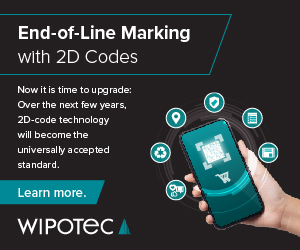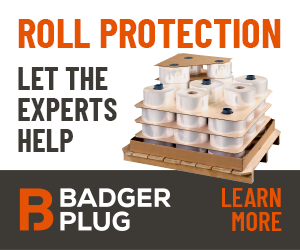Flipping the Lid

Manufacturers of dairy products like coffee creamers are turning to paper lidding to meet their sustainability goals and reduce supply chain issues. Image courtesy of Pixelle Specialty Solutions.
How Dairy Lidding is Changing
By Dave Magda, Director of Innovation, Pixelle Specialty Solutions
Foil and plastic film lidding have protected dairy packages for decades. Yet, sustainability and supply chain trends are driving dairy producers to seek lidding alternatives with less environmental impact. One option to meet this new demand is paper-based lidding.
Paper is a renewable, biodegradable resource that can be repulped and recycled when treated appropriately. Innovative, paper-based lidding solutions can be more sustainable and produced by companies located in the U.S. By comparison, aluminum foil and plastic are derived from finite resources and take a long time to break down in landfills. In addition, much of the aluminum foil sourced by dairy manufacturers comes from overseas producers requiring transcontinental shipping, which can bring added logistical challenges and environmental impacts.
Greater availability
Dairy products like coffee creamer, yogurt and ice cream can spoil without proper lidding. To ensure shelf life, it is important that manufacturers have access to a reliable source of materials. Most dairy packaging manufacturers use foil as their preferred lidding solution. Unfortunately, the majority of aluminum foil production is based overseas. Freight delays, can prevent dairy producers from receiving the lidding needed to package their products.
To address these supply chain issues, dairy companies are looking for lidding options a little closer to home. Many are turning to specialty paper manufacturers in the U.S. to develop domestically available paper-based solutions. By sourcing materials made in the U.S., lead times can be reduced, and on-time delivery improved.

Leading specialty paper manufacturers are developing innovative paper alternatives to film and plastic lidding that are repulpable, recyclable and free of per- and polyfluoroalkyl substances (PFAS).
Greater sustainability
Driven by consumer demand and government regulations, leading consumer packaged goods (CPG) companies are implementing environmental, social and governance (ESG) goals as part of their corporate sustainability strategy. They are evaluating their company’s environmental impact and finding ways to minimize it. For dairy manufacturers, the focus is on packaging.
One concern with aluminum foil and plastics is that it can take hundreds of years to decompose in landfills. Paper, however, is a biodegradable and renewable resource. According to the American Forest and Paper Association, paper also has a 68% recycling rate in the U.S.
To help companies meet their sustainable goals, specialty paper manufacturers in the United States are developing innovative, paper-based lidding solutions for dairy packaging that can be repulped, recycled and, if landfilled, easily broken down. These same paper companies are also dedicated to using all-natural materials in coatings when possible.
Specialty paper lidding technology
So how do manufacturers engineer papers to achieve a level of performance similar to the materials currently in use?
While there are many different approaches, specialty coatings can enhance the performance of papers and create an effective barrier for packaging applications. With specialty coatings, paper can incorporate heat sealing capabilities and improve print fidelity.
Heat sealing happens on the underside of a lid and is the mechanism that secures the product package. What makes a heat seal possible is a coating applied to the lidded surface that melts to the yogurt or ice cream container during the packaging process. It’s important that the coating create a strong bond that remains adhered until the consumer intentionally breaks it. To help companies meet productivity goals, lidding with heat-seal blister resistance can accommodate high-speed packaging.
Printing occurs on the top side of a lid. Some papers have a very good print surface that delivers superior print performance with high fidelity artwork reproduction. This level of packaging can better communicate a company’s brand and provide shelf appeal that attracts consumers to the product. This is also an effective way for companies to display How2Recycle® labeling on packaging, which is also growing in popularity. Being adopted by leading brands, How2Recycle is a standardized labeling system that clearly communicates recycling instructions directly on the package.
As more companies shift to paper-based lidding, it’s important to understand how paper lidding will work with existing packaging equipment. These machines were made to handle substrates other than paper. Paper has a different thickness and stiffness than film or foil. Packaging machines may need to be adjusted to accommodate paper substrates.
By creating and testing new solutions, the market is learning how to optimize packaging. Some long-held practices are being reevaluated and shifting. Past packaging was often overdesigned, and industry professionals are realizing that redundant levels of protection were not necessary to meet consumer requirements. For example, does coffee creamer or ice cream need to have a five-year shelf life, or is a six-month shelf life sufficient? By questioning what is truly needed in today’s packaging, manufacturers have the opportunity to trim excess and right-size their packaging for a smaller environmental footprint.

With specialty coatings, paper can incorporate heat sealing capabilities and improve print fidelity.
Dairy lidding that makes a difference
When companies challenge suppliers to find a new solution, suppliers usually do — and there’s a lot of creativity happening now. Leading specialty paper manufacturers are developing innovative paper alternatives to film and plastic lidding that are repulpable, recyclable and free of per- and polyfluoroalkyl substances (PFAS).
When making the switch to a new lidding provider, it’s important that manufacturers work with specialty paper experts who collaborate with customers to develop products specific to their unique application. It’s important for these paper manufacturers to complete extensive testing for lidding and provide solutions that are FDA-compliant for direct food contact.
Paper lidding is an alternative to foil and plastic that can help dairy manufacturers solve sustainability and supply chain challenges. By sourcing all-natural lidding that is biodegradable, recyclable and repulpable from U.S. suppliers, companies can better reach ESG goals and get their product to consumers on time.
About the Author
Dave Magda is the director of innovation for Pixelle Specialty Solutions, headquartered in Spring Grove, PA. He has 35 years of industry experience with multiple paper companies and chemical suppliers. Dave holds a bachelor’s degree in Paper Science & Engineering and an MBA in Technology Management. Learn more at www.pixelle.com.








